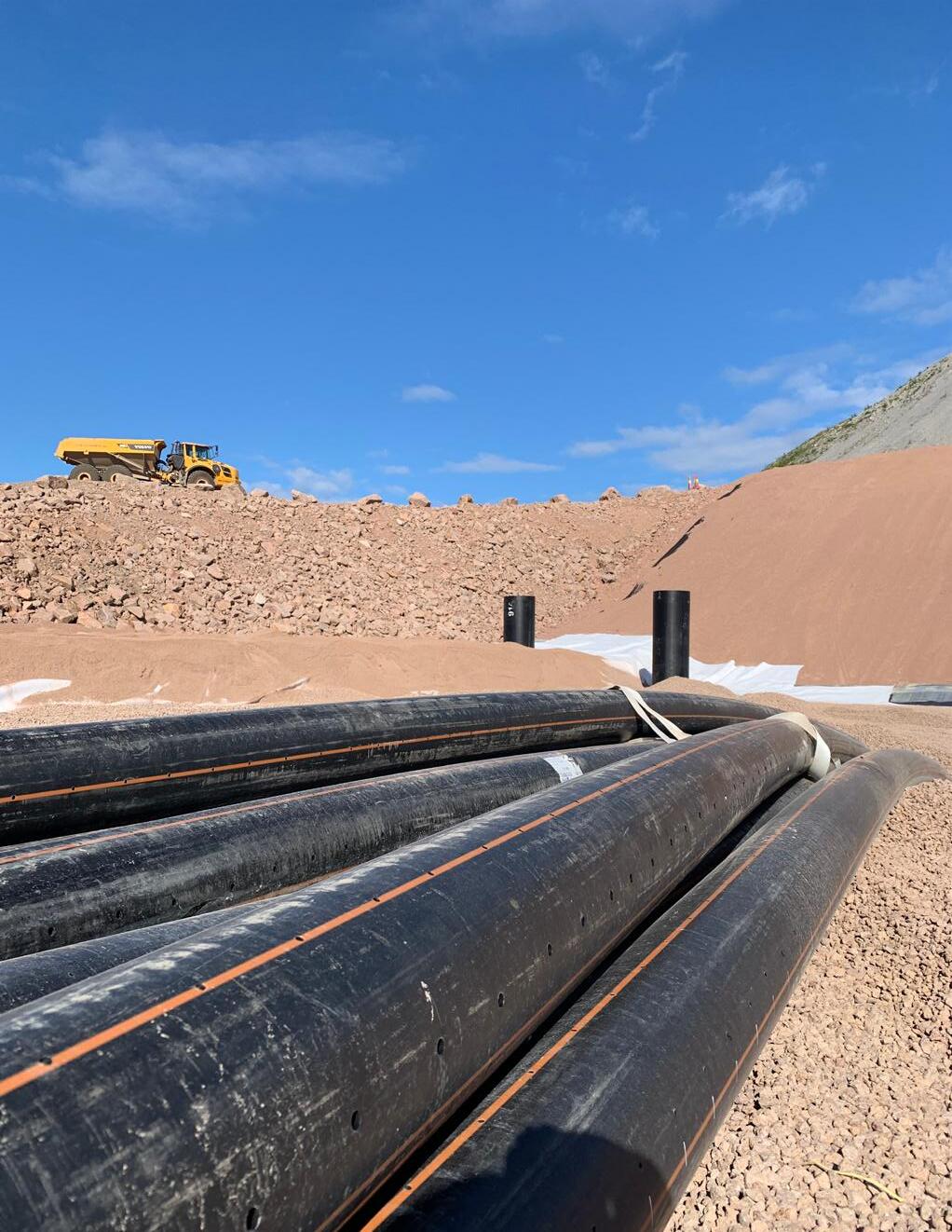
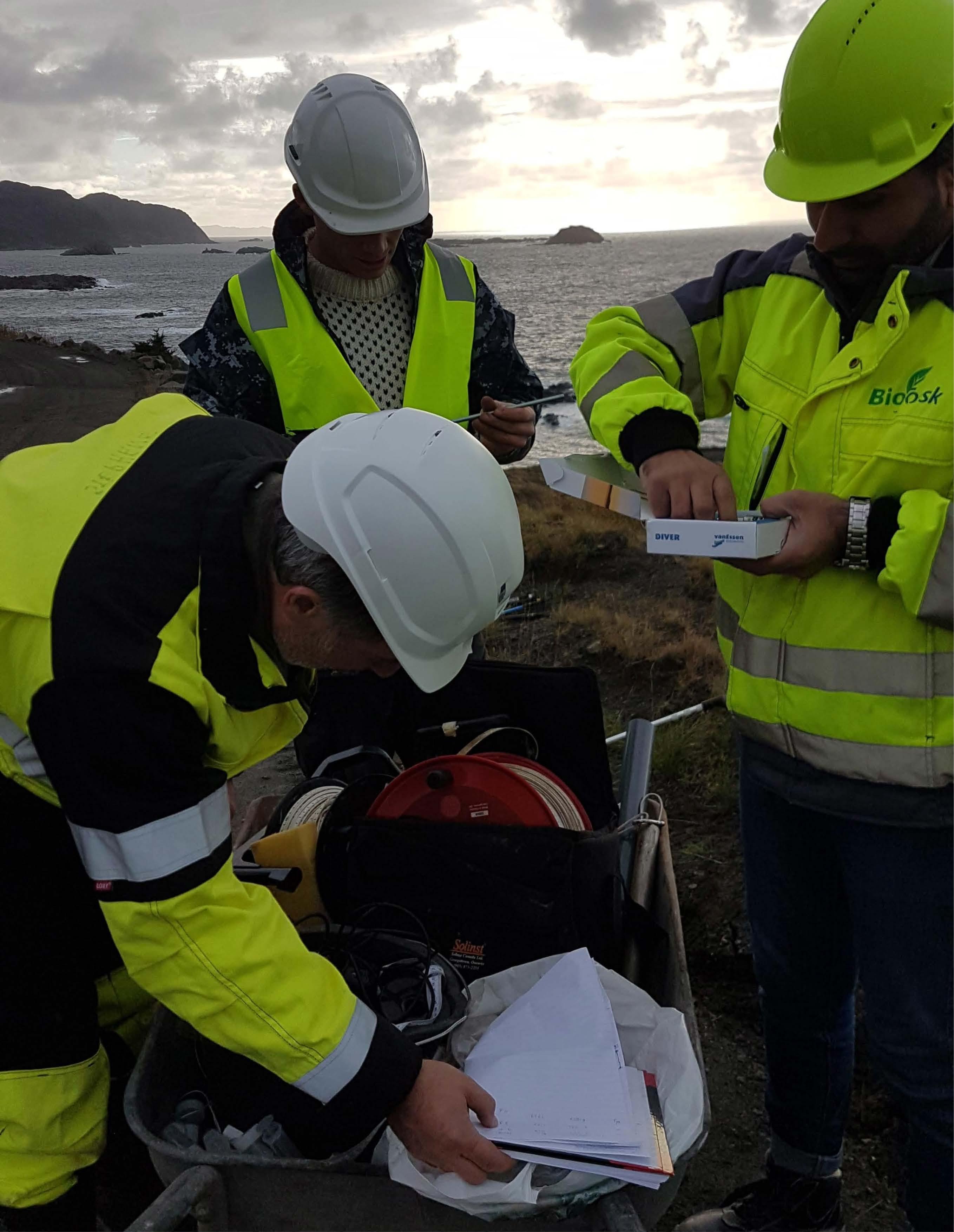
Annual Report 2023
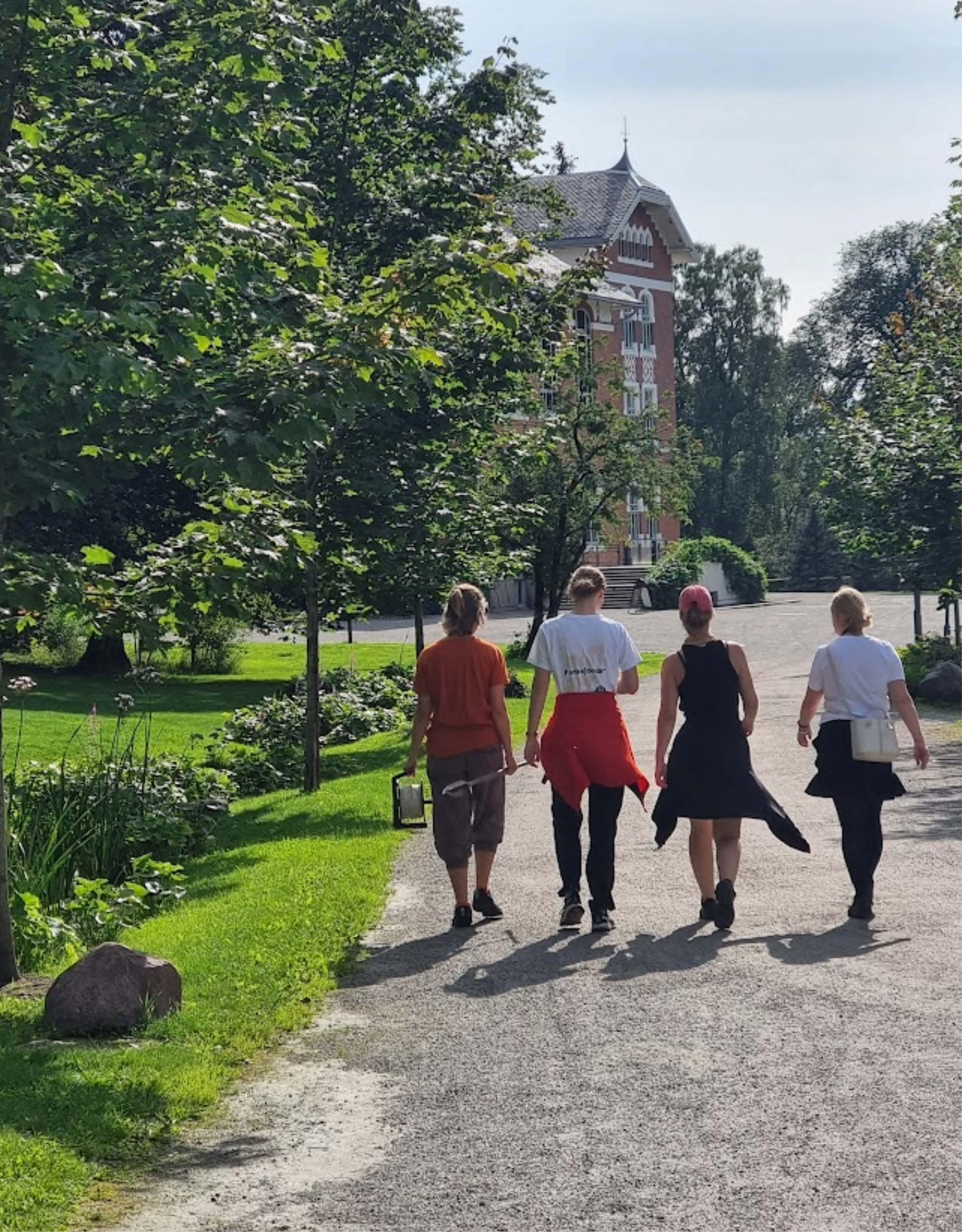
Annual Report 2023
earthresQue Annual Report no. 4
ISBN: 978-82-575-2990-1
RCN project 310042
Illustration front cover and end page: earthresQue
Photos by earthresQue unless otherwise stated
Photo colofon spread: Pexels
Publisher: NMBU – Norwegian University of Life Sciences
earthresQue, Rescue of earth materials and wastes in the circular economy, Centre for Research-based Innovation www.earthresQue.no

Content 06 Summary 09 Vision and objectives 10 Research plan and strategy 12 Work with innovation in earthresQue 14 Organisation 18 Scientific activities and results 31 International cooperation 33 Recruitment 34 Communication and dissemination highlights 37 Annual account 2023

Our society generates excess earth materials and waste at an everincreasing rate. More than 5 million tons of inorganic waste is landfilled in Norway every year. Currently no sustainable ways of handling excess earth materials and wastes are available, and we lack suited locations for their storage. These materials should be recycled, upcycled or reused in infrastructure and construction projects, instead of virgin raw materials. New innovations to strengthen the market for recycled raw materials are needed. The earthresQue centre works to create an innovative environment through long-term collaboration between stakeholders (municipalities, NGOs and citizen groups), innovation-oriented R&D-performing companies (waste management companies and contractors) and prominent research groups working in relevant disciplines from natural sciences to socio-economical sciences.
The centre has established an outstanding industry oriented research cluster with strong links between collaborating partners, researchers, stakeholders and students in our educational programmes. The work builds on an international network, hence, enhancing the internationalization of the Norwegian business sector. One of the goals is to ensure researcher training and the transfer of knowledge and technology in areas with major potential for future value creation. This is achieved through close collaboration between the stakeholders and research partners.
The research work is centred around many case studies clustered in ten topics. To ensure a higher degree of circularity of mass handling, 3 disciplinary work packages: WP1 Reuse Technology; WP 2 Sustainable reuse; 3 Regulatory framework work together in the topics and cases. The case studies have been defined in close collaboration with 24 user partners addressing the following research questions: How can new treatment processes for earth material wastes be developed to make these suitable as raw materials in new products? How can waste materials be managed in a sustainable manner, including all aspects of environmental, social and economic aspects? Including the management of old and future landfills. How can current obstacles for reuse be removed both in economic, regulatory, and governance terms? This includes business concepts to encompass society’s need for more reuse and recycling, and less use of virgin earth materials.
A wide range of research activities, both on site and in laboratories, were carried out in 2023. The number of students to take master’s and PhD in earthresQue is increasing. In total 13 PhD students are now funded or associated with the SFI centre. Results of the dredging project at Borg Havn revealed that content of pollutants was modest compared to contaminated sites on land and was concentrated in the press filter residue. The possibility of recycling the clay-rich fraction (less than 50%) is being further investigated.
Replacement of dry crust clay with press filter residue as top sealing, is tested at a pilot on Langøya landfill. To protect the sealing layer, which prevents infiltration of surface water into the deposited waste, we are testing the use of tunnel boring machine masses, surplus material from tunnel projects. Both will reduce the need to extraction of virgin materials. Preliminary findings from laboratory experiments, indicate that leaching tests, offer a more accurate assessment of the pollution potential from surplus rock from the Oslo area, compared to the current practice of determining total concentration. Results from this work will enhancing testing procedures, characterization techniques, and field measures to address this issue. Geophysical measurements on closed landfills, have up to now been limited in Norway. In earthresQue the potential of these methods is studied at sites with different geological settings. The aim is to minimize the need for destructive investigations. earthresQue partners have outlined methodology for assessing leachate emissions based on current understanding of leachate contamination and relevant regulatory frameworks to the Norwegian Environment Agency. This has been shared with environmental authorities, user partners, and various professional forums throughout 2023. Several landfill owners in earthresQue have installed equipment for continuous and improved monitoring of leachate quality and quantity, including testing of a new nitrate sensors.
6 7
Summary
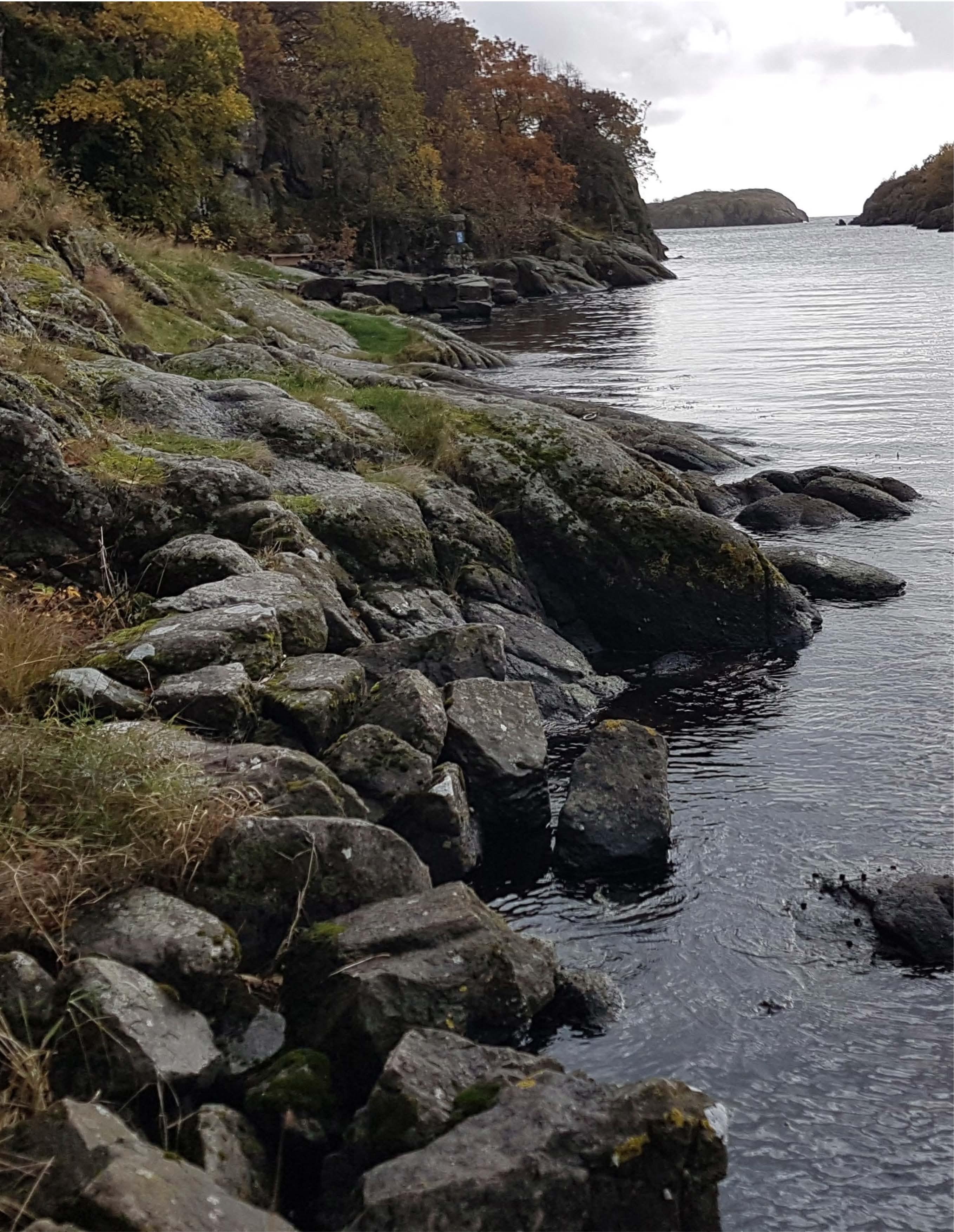
Vision and objectives
The primary objective is to develop technologies, systems, innovation, and a governance framework for the most sustainable management and treatment of wastes and earth materials, building on science-based education and information.
Secondary objectives are to ensure
• Recycling and reuse through new treatment processes for contaminated soils, surplus massed, C&D wastes, making them suitable as raw materials in new products. Including management of old landfill sites and sustainable solutions for future landfills.
• Sustainable management,reuse,and recycling of waste materials by developing methodologies and models to assess and document sustainability including all aspects of environmental, social and economic aspects of recycled materials and treatment methods, based on internationally accepted standards.
• Regulatory framework and governance methodology to remove current obstacles, both in economic,regulatory and governance terms.This includes optimised material flow and business concepts to encompass society’s need for more reuse/recycling and less use of virgin earth materials.
The ambition of the Centre is to become the nationally leading and internationally renowned research and innovation centre for sustainable use of waste earth materials.
8
Research plan and strategy
Our strategy revolves around addressing the most pertinent research and innovation needs by maintaining open communication with our user partners. Research efforts are concentrated on case studies, which can be focused on a particular geographic area or a shared challenge, such as addressing a specific contaminant. User partners have been strongly involved in defining obstacles for sustainable handling of surplus masses and highlighting knowledge gaps. The collaboration between user and research partners intertwines ongoing research projects and activities. Student activities and educational programs at NMBU and BI are strongly incorporated into the case studies.
Key waste fractions and ‘rescue’ operations with innovation potential defined by the user partners
Dredged sediments: Norway has a long coast and there is a continuous need for dredging harbour areas. Dredged sediments usually contain pollutants and there is a need for improved methodology to separate contaminated from clean sediments. Potential for reuse in new products and or use for recreating wetland need documentation and innovative solutions.
Contaminated soils: Contaminated soils include soils from construction projects containing mineral and organic pollutants, press filter residue from soil washing facilities, PFAS contaminated soil. The objective of our work is to i) reduce transport (cost and distance) ii) reduce costs for soil disposal and purchase of natural aggregates, iii) preserve landfill space, vi) conserve mined natural aggregate resources and reduce environmental and ecological impacts.
Tunnel operation: Tunnel boring machine, TBM, materials have mixed particle sizes and their contamination potential is related to the host bedrock. earthresQue aims to recycle full-face tunnel boring machine masses from larger tunnelling projects.
Acid draining bedrock, these are a challenge in geologic regions with sulphide containing gneiss (Lillesand region) and black shale (Oslo region): The aim is to develop novel methods for testing and treatment to mitigate oxidation both on-site (road construction) in in situ stabilization at landfills.
Construction & Demolition wastes: C&D wastes with focus in earthresQue are concrete and bricks. The objective is to develop technologies for recycling wastes from construction materials.
Lime-cement stabilized clays: Lime and cement are used to stabilize soft and quick clay in construction projects. The objective is to make way for new and better uses of this material.
Ashes from municipal solid waste incineration: have high pH and contain several unwanted trace elements, requiring safe handling and disposal. We aim to develop novel methods for utilising ashes as a secondary resource.
Old landfill masses: These usually contain mixed domestic and industrial wastes. High carbon content prevents re-landfilling. Treatment and handling solutions, tailored sustainability assessment tools and regulatory framework are required.
Landfill treatment: There is a need to develop safe storage and control of waste and water at landfills. Designs should isolate waste from the surrounding environment (atmosphere and water), they should also allow for potential use of the stored wastes by future technologies. Needs include improved methodology to delineate extent and contents of old landfills and develop methods to reclaim such areas, e.g.: remove contaminants, recycle materials, collect, and utilize or remove methane releases. For both old and new landfills it is necessary to remove pollutants and risks associated with leachate, as well as reduce costs and prepare for aftercare.
Impermeable barriers: Four critical elements are required for a secure landfill: a bottom liner, a leachate collection system, a cover, and a suitable natural hydrogeologic setting. The natural setting should be selected to minimize the possibility of wastes contaminating groundwater and surface waters. earthresQue is developing methods for assessing hydraulic properties of fractured rock systems as a natural barrier. We are also testing the use of wastes, such as lime stabilized clays, as impermeable barriers.
Nature restauration: Conventional methods to evaluate nature through impact assessments and value-neutral surveys cannot quantify the impact of various measures, neither negative nor positive. Better tools for weighting and measuring natural diversity based on concretization and typification of nature are required. These will be tested on reclaimed contaminated areas and landfill sites.
10 11
Work with innovation in earthresQue
The Centre benefits from substantial expertise in research and innovation, drawing from both our user partners and research collaborators. Research and innovation work centred around the case structure, provides a strong link between the need for innovations, highlighted by the user partners, and the researchers. Ideas and findings of interest related to innovations within and across various cases are reported and followed up. We anticipate various types of innovations to emerge from the Centre, including:
Substitution innovations: replacing existing methods and technologies with new technologies.
Efficiency innovations: improving technologies and methodologies to improve their results and outcome.
Market-creating innovations: The latter form embraces new configurations for value creation and forces all actors to approach value creating activities with different tools.
Enhancing both new and existing knowledge will pave the way for deeper insights and the refinement of tools essential for effective risk management. This advancement is pivotal in guiding the development and updating of regulations concerning surplus masses and waste.
The Centre maintains focus on developing skills and stimulating cross-cutting innovation among the partners. PhD fellows are encouraged to keep an innovative mindset with respect to their own research activities and are challenged to present these for our user partners. The Centre will continue to organize seminars and workshops, geared to develop key innovation skills.

12 13
Organisation
Organisational structure
To ensure good progress and activity, the Centre organisation has been restructured from the original disciplinary Work Packages to an interdisciplinary case structure (figure 1). Each Case has a case leader (research partner) and a case promoter (user partner), thereby distributing responsibility and closed involvement of user partners.
The Faculty of Environmental Science and Natural Resource Management (MINA) at the Norwegian University of Life Sciences (NMBU) has the Centre administration and takes responsibility for the management and coordinates dissemination activities of the project and makes sure the work in the Centre is in accordance with the project plans approved by the research council and the board. The Centre management consists of the Centre manager, deputy, coordinator, communication advisor, and work package (WP) leaders.


Centre Management
CentreDirector, Professor at NMBU
Helen K. French
Deputy, Principal Engineer at NGI Gudny Okkenhaug
WP-leaders, Senior Researcher at NORSUS Ole Jørgen Hanssen and Associate Professor at BI
Marit Sjøvaag
Centrecoordinator, Marte Norum Guttulsrød
Communicationadvisor, Siri Skogsrud Funnemark
Innovatior advisor, Sjur Tveite
Centre Board
Chair, Magnus Sparrevik, Forsvarsbygg
Hans Fredrik Hoen, NMBU
Thomas J. Henriksen, AF Decom
Andreas O Harstad, Skanska
Guro Grøneng, NGI
Hanne Lerche Raadal, NORSUS
Ragnhild Kvålshaugen, BI
Lise Reinertsen, Bergen
municipality/Dag Lauvås, Skien municipality
Tormod Lundberg/Terje Kirkeng, Lindum
Figure 1: Organisational structure.
14 15
Partners
Our user partners range from municipalities and entrepreneurs to small start-up companies and business clusters, geographically distributed over all of Norway. They represent an enthusiastic group which combined with our scientific partners creates an inspiring working environment. Close collaboration between the different groups is a prerequisite for understanding the challenges of the industry and society which in turn nurtures creative research and innovation.
Collaboration between the Centre’s partners
There is close collaboration between user partners and research partners. In 2023, several meetings, seminars and workshops were organised on Teams and as physical meetings. Our new organisational structure with cases grouped under ten different Topics increases the relevance for the user partners and forms an arena for interdisciplinary interaction – which is an important key for increased circularity. Topic and case leaders come from the researcher team, while case and topic promoters come from the user partners. These working groups form excellent platforms for exchanging experience, information about new projects etc. At the annual meeting, nearly 80 researchers and user partners convened. The agenda included presentations and collaborative sessions aimed at strategizing activities for the upcoming period. Additionally, a visit was arranged to explore the industrial and wetland areas at Øra, Fredrikstad, where an earthresQue PhD fellow and research partner NORSUS are conducting a wetland restoration project. This annual gathering serves as a pivotal occasion for strengthening partnerships within the centre and fostering the exchange of innovative ideas.
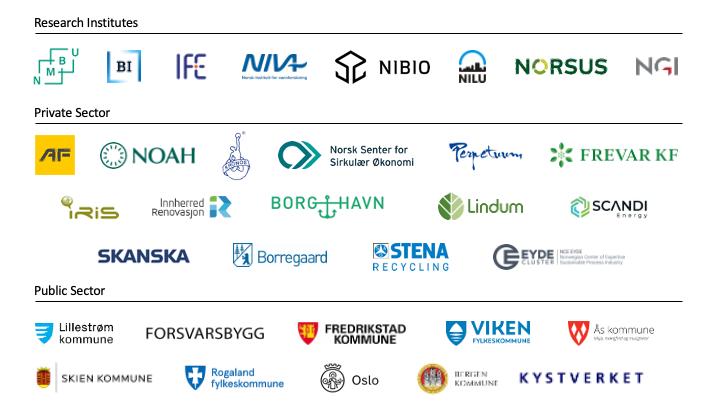
Research Institutes
BI – Norwegian Business School, IFE – Institute for Energy Technology, NGI – the Norwegian Geotechnical Institute, NORSUS – Norwegian Institute for Sustainability Research, NIBIO –Norwegian Institute of Bioeconomy Research, NILU – Norwegian Institute for Air Research, NIVA –Norwegian Institute for Water Research, and NMBU – Norwegian University of Life Sciences as Centre coordinator.
Private Sector
AF Decom, Borg Havn, Borregaard, Eyde-klyngen, Frevar, Kronos Titan, Lindum, Iris, Innherred Renovasjon, NCCE, NOAH, Perpetuum, Scandi Energy, Skanska, Stena Recycling.
Public Sector
Bergen Municipality, Forsvarsbygg – The Norwegian Defence Estates Agency, Fredrikstad municipality, Kystverket -The Norwegian Coastal Administration, Lillestrøm municipality, Oslo municipality, Rogaland County, Skien municipality, Viken County (Akershus county from January 2024), Ås municipality.

16 17
Scientific activities and results
Dredged sediments
For the first time, treatment of sediments from dredging projects has been tested on a full scale in Norway. One hundred tons of sediments from dredging in Borg Havn near Fredrikstad was treated at “Nes Miljøpark”, the soil washing plant of AF Decom. The dredging sediments from the Glomma River contain approximately 50% sand, a valuable resource that can reduce the need for sand extraction from quarries.
To optimize the washing process, coarser materials had to be added to achieve good cleaning efficiency, materials that are reused after treatment. This is the first time the method has been tested on a large scale on dredged sediments in Norway. Compared to contaminated soil near major cities, the content of pollutants was modest, and was concentrated in the press filter residue. The press filter residue consists of silt and clay, and the water content is reduced in a filter press. The possibility of recycling the clay-rich fraction is being further investigated.

18 19
Sustainable landfill cover
We have established a pilot project at the landfill on Langøya where dry crust clay is replaced with press filter residue as top sealing. The sealing layer ensures that water does not infiltrate into the deposited waste. This way, we replace virgin clay with a mass fraction that needs to be disposed of. To protect the cover layer from erosion and frost, 2 meters of material is placed on top of the sealing layer. Trials with the use of tunnel boring machine masses, surplus material from tunnel projects, save the environment from additional material extraction. Furthermore, studies are being conducted on the use of alternative materials through life cycle analyses, which also include land use.
By covering completed sections of the Langøya landfill with mass fractions currently classified as waste, we are gaining invaluable practical insights that can be shared with other landfills in the closure phase. The mass fractions under examination include filter cake, the residual by-product from soil washing plants, and lime-cement stabilized clay, which originates from construction projects in regions with soft clay. Extensive testing of protective layers above the sealing layer is underway, encompassing large-scale experiments, including the utilization of materials from tunnel boring machines. Findings from these pilot tests are informing the development of new designs for future landfill top covers, benefiting several user partners within the centre such as NOAH and Innherred renovasjon.
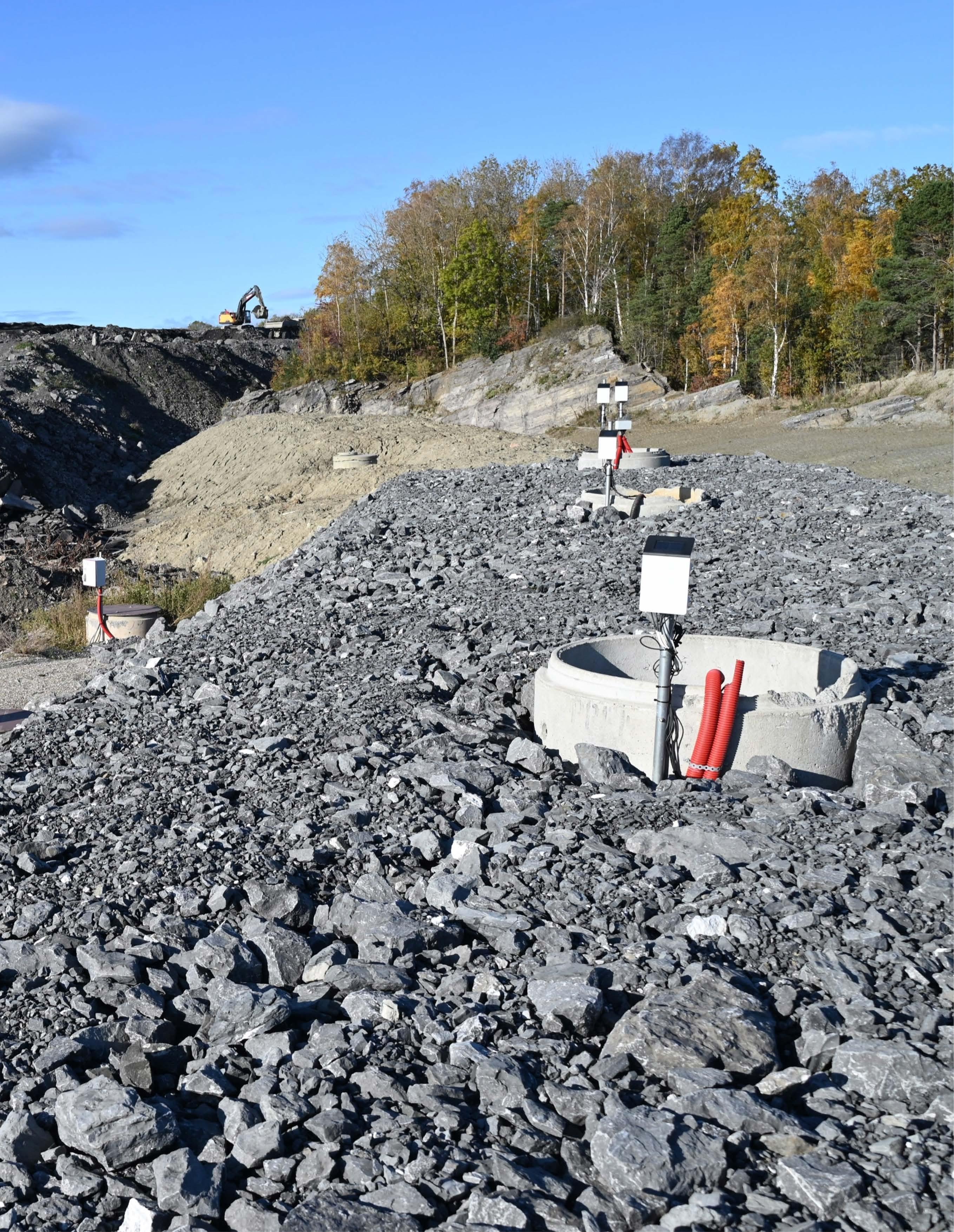
20 21
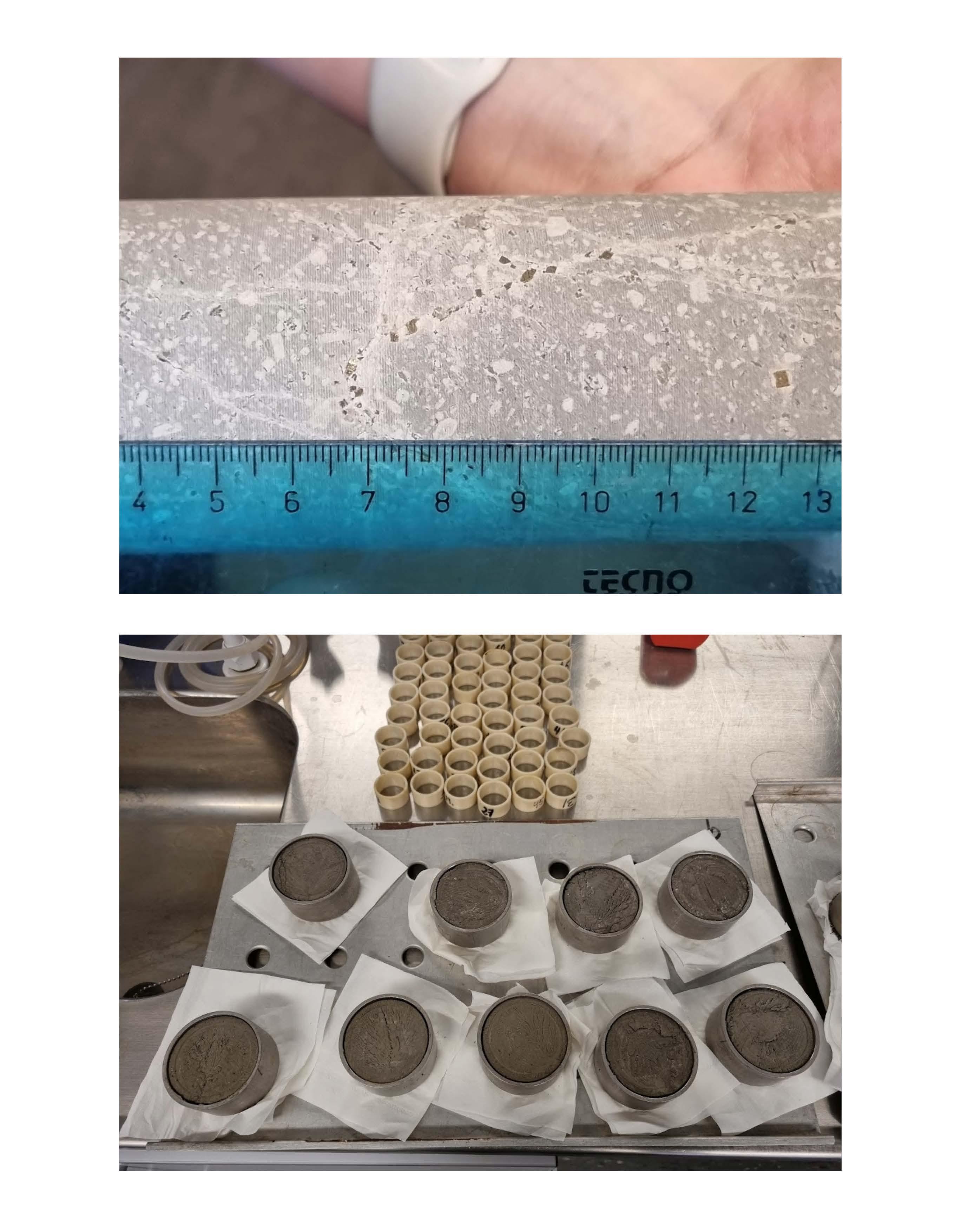
Improved testing methods for surplus masses (rocks)
Preliminary findings from laboratory experiments, where we assess the leaching of naturally occurring metal deposits in rocks, indicate that leaching tests, where samples crushed to varying sizes are submerged in water, offer a more accurate assessment of the pollution potential from these rock types compared to the current practice of determining total concentration, i.e., the amount present in the rock sample. The more finely crushed the sample, the higher the risk of leaching.
Results from both laboratory and field tests demonstrate that the technical quality and potential risk of pollutant leaching from surplus masses can be adequately identified. Consequently, the cessation criteria for waste can be achieved. Some aspects of this research are conducted in collaboration with Bærum Ressursbank (Bærum Resource Bank).
22 23
Safer handling of acid draining rocks
Current methods for detecting acid leaching potential, which rely on analysing total sulphur concentrations, visually assessing the weathering condition of the rock, and conducting a temperature test with hydrogen peroxide, yield highly variable and uncertain results. Consequently, the decision-making process regarding the deposition and handling of acid-producing rock may be based on inaccurate grounds. Acidification in landfills lacking adequate protection against water flow has resulted in highly acidic streams, particularly in Agder. We are persistently working on enhancing testing procedures, characterization techniques, and field measures to address this issue.
Lindum and NOAH are working on novel solutions for depositing acid-draining masses, and we have mapped knowledge gaps to detail the research plan further. Various buffering materials have been suggested that may be relevant for NOAH and Lindum. Additionally, we will investigate how compression and storage of a combination of acid-draining and buffering materials affect oxygen access and water permeability within the masses.

24 25
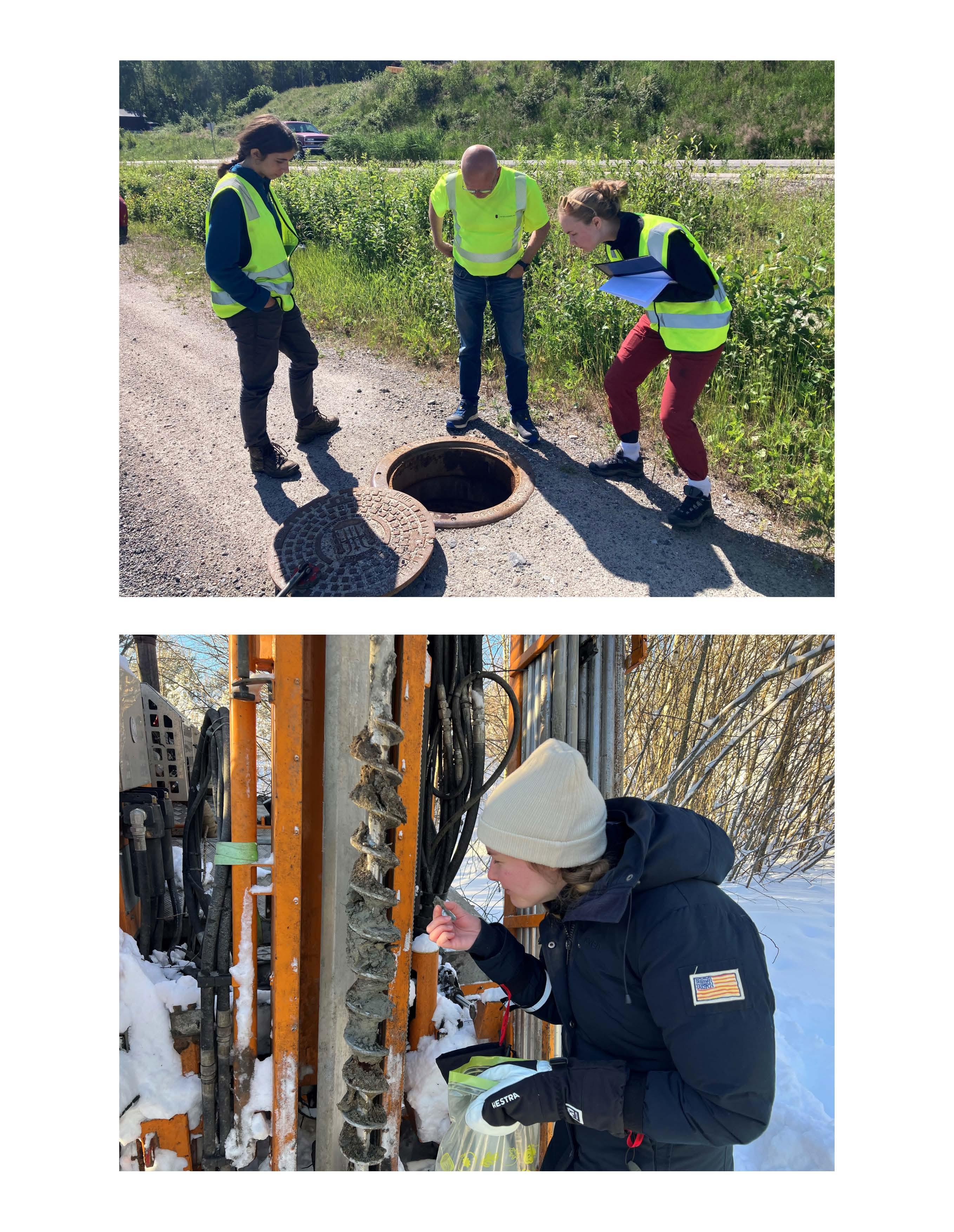
Better control of buried municipal landfills
The project to remediate old landfill masses from Slettebakken in Bergen municipality, a partner in earthresQue, was awarded Miljøringenprisen (the Environmental Ring Prize) for 2023, recognizing its groundbreaking work in this field in Norway. In earthresQue, we have conducted geophysical measurements on this and other closed landfills, recognizing the need for further work in this field in Norway. While these results require validation through physical ground investigations, it's essential to note that drilling into such masses poses the risk of unintentionally releasing methane gas and creating openings in natural sealing layers, potentially allowing water to penetrate beneath the deposited masses. Thus, minimizing the need for such investigations is paramount.
In 2022/23, earthresQue partners contributed a knowledge base to the Norwegian Environment Agency. The report outlines a methodology for assessing leachate emissions based on current understanding of leachate contamination and relevant regulatory frameworks. This methodology has been shared with environmental authorities, user partners, and various professional forums throughout 2023. As a result of their involvement in earthresQue, several landfill owners have installed equipment for continuous monitoring of leachate quality and quantity. This proactive measure offers significant advantages over traditional point measurements, providing a more comprehensive understanding of the landfill's impact on water quality in the surrounding areas. Among the sensors being tested is one that analyses nitrate levels. Understanding variations over time and water quality parameters like nitrate offers new opportunities for improved control of treatment plants. Additionally, many user partners are now exploring innovative treatment solutions for both leachate and passive oxidation of methane gas in microbiologically reactive top layers.
26 27
Joining forces to solve the PFAS challenge
Concerning PFAS remediation, we have broadened the NMBU expert group to incorporate the Faculty of Science and Technology (REALTEK), renowned for its specialised knowledge in diverse remediation technologies. Additionally, they possess pilot-scale remediation technology, which we plan to utilise more extensively in the future. This expansion not only grants us access to a broader pool of master's students but also enhances our potential for pioneering solutions. Insights gleaned from pilot plants and laboratory experiments are leveraged to refine methodologies for our user partners, thereby improving the cost-effectiveness of measures and mitigating pollution risks for the future.
Kingdom of Sustainability
An innovative role play, "Bærekraftsriket" (Kingdom of Sustainability) developed within earthresQue, serves as a practical demonstration of how the circular economy can operate in realworld contexts. This role play has undergone testing with various student and pupil groups. In "Bærekraftsriket," participants assume the roles of different stakeholders entrusted with addressing environmental challenges within their communities. The objective is to encourage participants to explore solutions that may involve repurposing waste into viable products, thus embracing circularity principles. Successful solutions must carefully consider factors such as climate impact, biodiversity conservation, and economic viability, highlighting the complexity of circular approaches. Through this engaging role-play, participants have the opportunity to challenge their own perspectives, interact with others, and foster a sense of constructive optimism for the future.

28
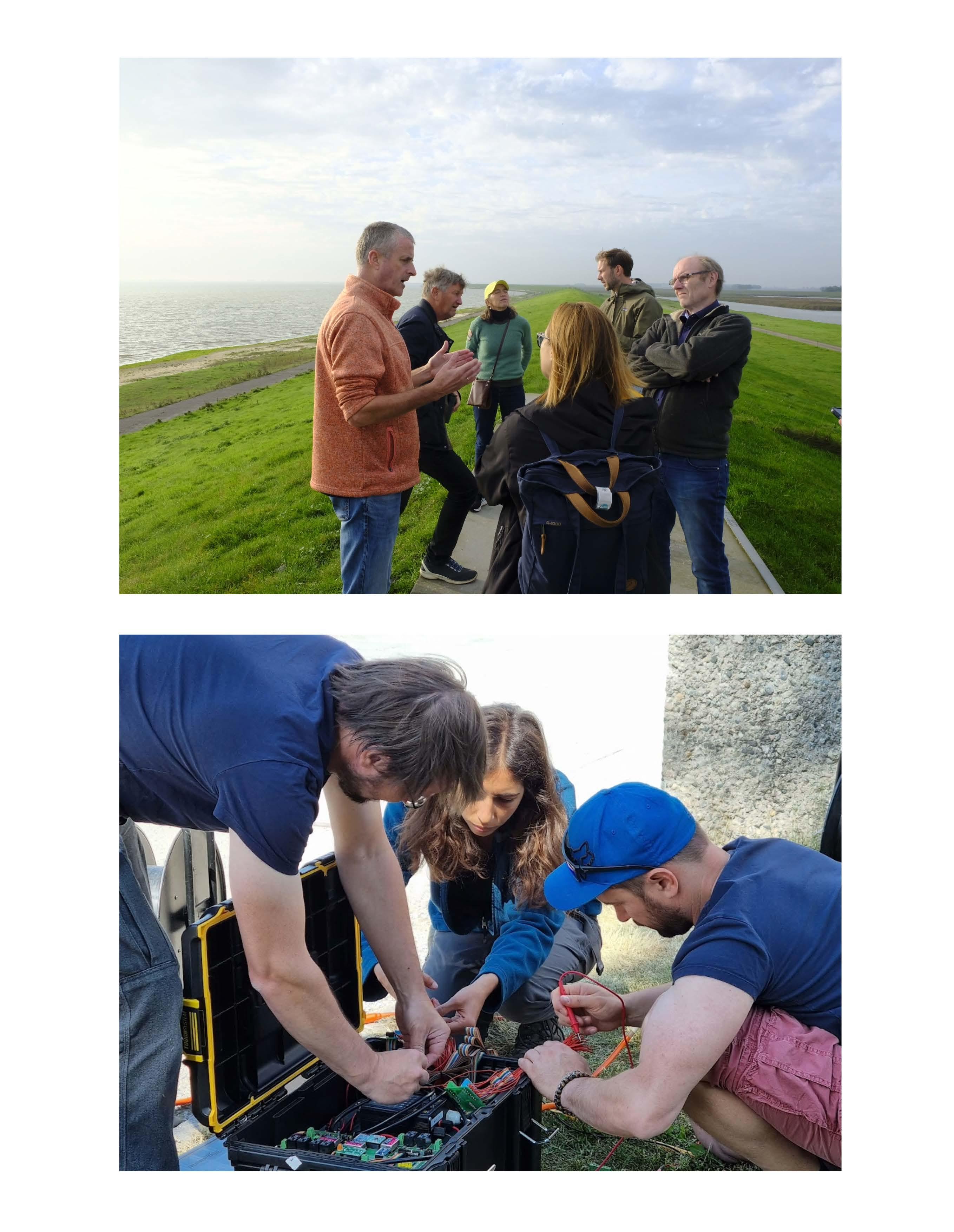
International cooperation
In 2023, we hosted and collaborated with three Post-doctoral candidates, partially funded by other projects. Dr. Bin Zhao from the Institute of Eco-environmental and Soil Sciences, Guangdong Academy of Sciences, Guangzhou, China, focused on developing methodology for sustainable assessments for treating PFAS-contaminated soil. Dr. Mohit Somani from the Indian Institute of Technology (IIT) Bhubaneswar, India, contributed to activities concerning landfill gas treatment technology. Additionally, Dr. Christian Engelman from TU Bergakademie Freiberg, Institute for Geology in Germany, was included in the centre, working on post-use of abandoned mines, potential for energy storage, and DNAPL contaminants in the ground.
We collaborated with researchers Dr. Nicolas Forquet and Dr. Remi Clement from INRAE, Lyon. They constructed a prototype of a field instrument for electrical resistivity measurements, OhmPi. We plan to use this to test the spatial development of water and gas in closed landfills. Two internship students from France, Sarah Francia and Loic Trutin from Ecole Nationale Supérieure Agronomique de Toulouse and École nationale du génie de l'eau et de l'environnement de Strasbourg respectively, participated. Sarah engaged in fieldwork at landfills with earthresQue partners Skien and Lillestrøm municipalities. Loic followed up on PFAS cell leachate treatment at Perpetuum's facility near Tromsø.
earthresQue partners in the Dredging Topic group (Borg Havn case) organised a study visit to the Netherlands to learn about methods dredging and mass recycling projects in Dutch coastal areas.
EU funded collaborations
The centre collaborates with ARAGORN (Achieving remediation and governing restoration of contaminated soils now), an EU HORIZON project that commenced in 2023 (Aragorn Horizon, aragorn-horizon.eu). NGI is a central partner, and several earthresQue employees are involved in overlapping themes such as PFAS-contaminated soil and shooting range soil.
Two earthresQue researchers spent time at Polytechnique Montreal in 2023 through the EU project (Marie Skłodowska-Curie Actions) Geores – Geomaterials: From Waste to Resource.
Dr. Ilias Fikos from Aristotle University in Greece visited NIBIO and NMBU for a week in June to participate in fieldwork with researchers and master's students in earthresQue. His visit was funded by Erasmus, an EU scholarship for researcher mobility. The purpose of the stay was training in state-of-the-art techniques for shallow geophysical investigations with high resolution. Specifically, electrical resistivity tomography and self-potential measurements, preparations and data processing in experiences with best practices and software. Also, to familiarise himself with Norway's practices in the use of geophysical methods for environmental monitoring and/or recovery of waste areas.
30 31

Recruitment
PhD candidates financed by the Centre
Cathrine Eckbo
Ingvild Haneset Nygård
Bilal Tariq
Anders Gunnar Helle
Olav Bjerke Soldal
Saheed Opeyemi Adebunmi
Anna Maria Hatland Associated PhD candidates
Fanjing Meng, NMBU
Karen Ane Skjennum, Lindum
Christian Schöpke, IFE
Simen Arne Kirkhorn, FFI
Einar Bratteng, NCCE partners
Hugo Firmo, BI
32 33
Communication and dissemination highlights
earthresQue hosted the webminar Avfallforsk: Excavation and demolition materials – from waste to resource in urban areas; Recycling of contaminated materials in the city; Collaboration on urban materials: the case of Pådriv Arena. Organiser Avfall Norge (the Norwegian Waste Management and Recycling Association). earthresQue gave multiple presentations in 2023; at The Norwegian geological winter meeting; For the Norwegian Ministry of Climate and Environment; and at Miljøringens Jubileumsseminar (the Environmental Industry Anniversary Seminar organised in collaboration with the Green Construction Sector), focusing on Sustainable Mass Management: Is sustainable reuse of dredged sediment from the seabed possible; Opportunities for recycling surplus soil and waste, highlights from research and innovation in SFI-earthresQue; Reuse of soil as sealing layers at landfills; Sustainable and innovative recycling of concrete
Lectures in regular courses an NMBU
MILJØ100 Introduction to Environmental Sciences, MILJØ302 Environmental Sciences, Forny302 Sustainable Management of Resources in a Circular Economy
International scientific conferences
InterPore 2023, 15th Annual International Conference on porous media, Edinburgh, Scotland.
Poster Presentation: Delineating external stressor signals as time-variant conditions affecting DNAPL source zone formation. EGU (European Geoscience Union) General Assembly at Vienna.
Poster Presentation: Connecting the dots: Fracture mapping for landfill sites in fractured bedrock.
Communication to the general public
Centre Director Helen K. French represented earthresQue at the NGI panel discussion during Arendalsuka, focusing on the question: "Why don't we have a Finn.no for reusing materials from construction sites?". earthresQue organized an open meeting, for local politicians and media, to present results from sample dredging at Borg Havn at Litteraturhuset, Fredrikstad.
A new teaching tool
The shift to circular economy and green solutions is complex and has many dilemmas. earthresQue has developed a teaching concept about this called “Bærekraftsriket”, in English it might be called the Kingdom of Sustainability. The aim is to provide experience and consciousness about the following: i) different aspects must be considered to solve environmental challenges, ii) different actors have different interests, viewpoints, desires and suggested solutions, but also speak different languages. The teaching concept has been tested on teachers training students, upper secondary pupils and BSc students at MINA.
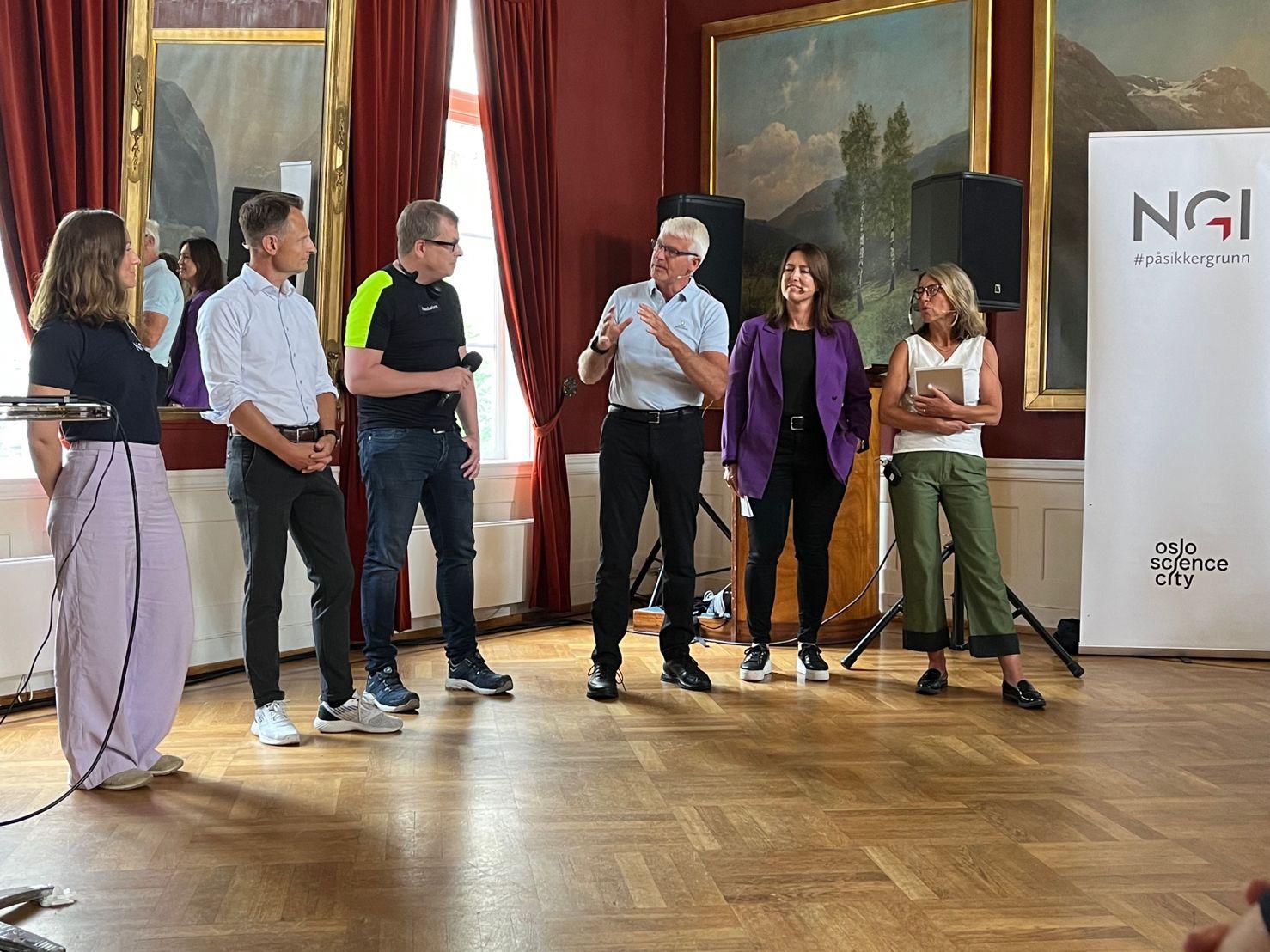

34 35
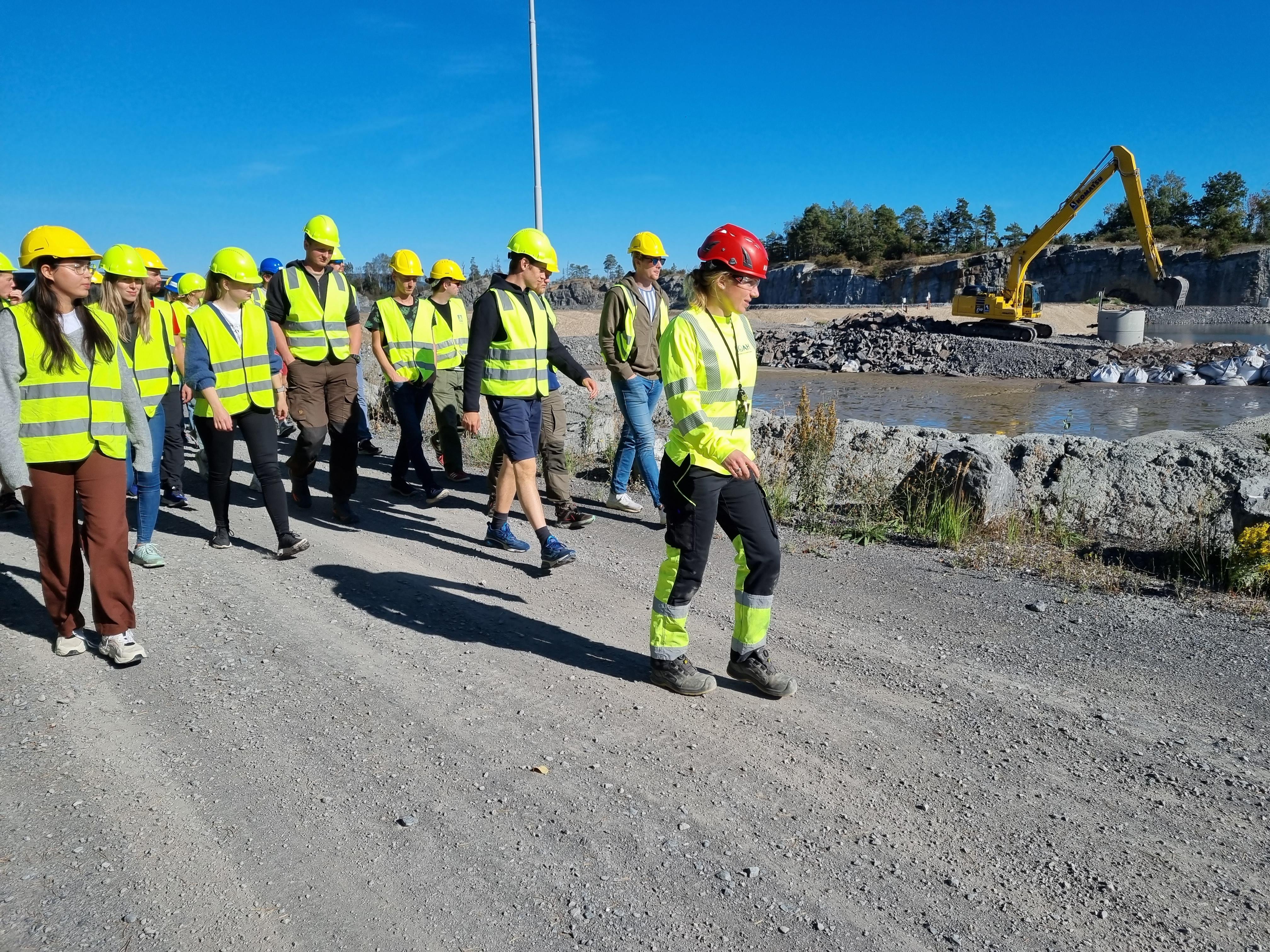
Annual account 2023
36 37 13 117 8253 6674 Funding The Research Council Research partners Private partners Public partners 2498 30 542 21 370 6674 Total Costs Research partners Private partners Public partners 2498 Total 30 542 Numbers in 1000 NOK

























